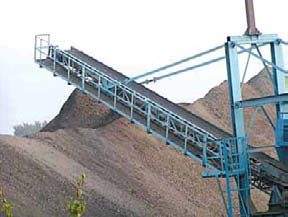Magnetic Properties
Magnetic properties of materials arise from the spin of the electrons and the orbital motion of electrons around the atomic nuclei. In certain atoms, the opposite spins neutralize one another, but when there is an excess of electrons spinning in one direction, magnetic field is produced. Many materials except ferromagnetic material which can form permanent magnet, exhibit magnetic affects only when subjected to an external electro-magnetic field. Magnetic properties of materials specify many aspects of the structure and behavior of the matter.
Various magnetic properties of the materials are magnetic hysteresis, coercive force and absolute permeability which are defined as under.
1. Magnetic Hysteresis
Hysteresis is defined as the lagging of magnetization or induction flux density behind the magnetizing force or it is that quality of a magnetic substance due to energy is dissipated in it on reversal of its magnetism. Below Curie temperature, magnetic hysteresis is the rising temperature at which the given material ceases to be ferromagnetic, or the falling temperature at which it becomes magnetic. Almost all magnetic materials exhibit the phenomenon called hysteresis.
2. Coercive Force
It is defined as the magnetizing force which is essential to neutralize completely the magnetism in an electromagnet after the value of magnetizing force becomes zero.
3. Absolute Permeability
It is defined as the ratio of the flux density in a material to the magnetizing force producing that flux density. Paramagnetic materials possess permeability greater than one whereas di-magnetic materials have permeability less than one.
Magnetism is a class of physical phenomena that are mediated by magnetic fields. Electric currents and the magnetic moments of elementary particles give rise to a magnetic field, which acts on other currents and magnetic moments. Every material is influenced to some extent by a magnetic field. The most familiar effect is on permanent magnets, which have persistent magnetic moments caused byferromagnetism. Most materials do not have permanent moments. Some are attracted to a magnetic field (paramagnetism); others are repulsed by a magnetic field (diamagnetism); others have a more complex relationship with an applied magnetic field (spin glass behavior and antiferromagnetism). Substances that are negligibly affected by magnetic fields are known as non-magnetic substances. These include copper, aluminium, gases, and plastic. Pure oxygen exhibits magnetic properties when cooled to a liquid state.
Reference Introduction to basic Manufacturing Processes and Workshop Technology by Rajender Singh.














